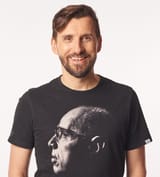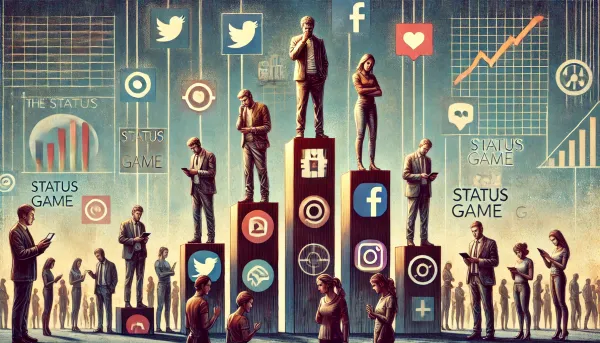Sensing machine: what it is and how to build one?
How to tell what might be the next thing? What to do next? What is the "sensing machine"? Does such a thing even exist? In business, and as persons, we are getting a lot of signals. Those signals can help us "sense" what is the next THING and how to attack it.

How to tell what might be the next thing? What to do next? What is the "sensing machine"? Does such a thing even exist?
I tweeted a short response to the thread around Amazon and AWS:
AWS is Amazon's sensing machine to know which industry and business take on next.
And it looks like it caught with an audience. Let's talk about the sensing machine idea. Do you need one, and can you build it for business or individual needs?
Warning: There will be references to Wardley mapping. You've been warned.
NOTE: Those are my thoughts and observation. This post contains no insider knowledge about processes or decision-making.
Sensing machine
It isn't a formal idea of "a thing." I spoke about it a few times with Krzysztof Daniel using this term.
You are in the business of NOW. You do whatever you need, and there is a chance you do it right. How to tell it? Are you still in business? Aren't you? It means that some of the things you are doing, you are doing right. There's always a space for improvement.
You need to handle the basics before thinking of more complicated things. In business terms, things like cash flow, hiring, watching, and following your indicators of being "OK." It might be your health and fitness, personal finances, and getting on the right track of your career.
NOTE: If you don't know where to start, you can begin evaluating doctrine within your organization - You should always start with doctrine. Unless you should not
The moment will come that you will start to think - WHAT'S NEXT? What problem to tackle next? What is the next thing in your business line? Should you change your focus?
The question is: How to decide, what is the next thing? How to tell what is taking off?
Here is where the Sensing machine idea kick's in.
- It is not a "machine" as a real thing. It is a process of gathering signals to tell that something might be a "next thing" of your interests worth pursue it for the future.
- It might be new technology emerging, which will sweep your current consulting services market.
- It might be a new need among the customers to address and capture it before others do.
- It might be a new, emerging market where you can move and dominate it.
- It might be a new skill, programming language, which will give you leverage in the jobs market.
Whatever it is, there are signals that it is coming. The question is - how you can "sense" it and turn it into actions.
It is what I call a "sensing machine." A method to capture the signals that "something" is going on in the market, what you can analyze to decide, and your next move!
AWS as a sensing machine for Amazon
Let's get back to the tweet quoted above. How can AWS be a sensing machine for Amazon as a business?
AWS is Amazon's cloud, where it delivers compute, storage, and all kind of higher-level services built on top of it to its customers.
If you are a business, you can leverage it and build your application and services on top of AWS services.
You can also look at current AWS offerings and what their customers might need and build a service or tools complementing AWS itself.
Another option is to build a solution on top of AWS and sell it to other companies.
In all these cases, what AWS gets from you is at least two signals:
- Your cloud services bill
- Your user's traffic, in the form of business customers using the service or AWS users, using a tool, complimentary service, or solution.
(most likely, they get more singles but let's use only those two obvious elements and not delve deeper into it)
If your business (or broader your area of business) is growing, your spending on AWS cloud will most likely increase. If your tool or service is successful among AWS customers, it will generate a bigger bill coming from AWS usage will increase.
Bottom line: a business that generates money and uses AWS gives Amazon a signal through customer traffic and an increase in AWS usage on your services (and increased bill you pay them).
What is essential, they don't have to breach your data confidentiality or snoop into your accounts to see what's in them. They can observe "signals" like:
- Network traffic
- Service consumption (and type of services)
- Bill
To sense that there is growing business in some of "their" customer segment.
What Amazon can do with such information is to see:
- What type of business is it?
- What customer needs it fulfills and how?
And then use it in their decision-making process (I don't have any internals on it) to decide to enter this market if it makes sense for them.
How it materializes are new business areas where Amazon starts to operate. In the case of AWS partner/services ecosystem with some of those being "Amazoned" at every re:Invent with new services announcements?
It isn't only what AWS customers deliver on top of AWS for their businesses. What you do as an AWS user, what workloads and services you are utilizing are a single AWS sensing machine.
Of course, AWS is not only Amazon's source for its service machine. They have an entire Amazon marketplace at their disposal.
Is Amazon alone in it? Let's take a look at GitHub.
NOTE: Again, it is my point of view, not on any internal knowledge you might think I can get being MVP or MS Regional Director :)/
GitHub is many things. It is a code repository and DevOps platform for Open Source and commercial projects.
It is big enough and essential that Microsoft made a bet and purchased it.
Microsoft can use it (I'm not saying it is using it in this way), as a sensing machine, for what is emerging in software development.
What information can GitHub provide as a "sensing machine"? Let's speculate a bit on it:
- What are current trends in the usage of languages and tools (contributes to Microsoft's developer tools and APIs)?
- What are emerging coding and DevOps patterns and practices?
- What are emerging topics and trends in specific software development areas, e.g., trends in Machine Learning or AI projects.
Those are to name a few. Open Source projects can deliver a lot of information on emerging in many domains and across developer communities.
It is an intelligent sensing machine for a company like Microsoft, delivering cloud services and developer tools.
Assuming they use it this way, those signals are input to the decision-making process of developing new tools, areas of investment in Azure services, etc.
Another example brought to my attention through Twitter was BlackRock's Alladin. It looks like an interface to BlackRock's sensing machine for the financial market, made available to its investors as a service.
Can you develop your sensing machine?
The short answer is: Yes, you can!
Please, don't expect a simple, clean recipe here with "Ten steps to build your sensing machine" (would make quite a good title for online training, don't you think)?
Every organization and individual has many signals available for "sensing." Let's look at a business example:
- If you see a flow of inquiries from customers in a specific industry (if it wasn't visible for you so far), it might be an excellent decision to take a look at what is happening there.
- If some of your customers start to use more and more of your services or increase demand for specialists in a specific area, it might be a signal that something is developing there.
- If bills from a particular customer, who is using cloud services through your organization as a billing entity grows, it might signal new business there which generates it.
As an individual, you can also build it based on public signals like:
- Twitter discussions and topics trending out there
- Job market observation of job postings, new areas and requirements in it
- Trending topics on conference talks (be aware of Buzz and that novel, exciting things are rarely discussed at mainstream conferences)
- Trends in technical papers and articles
- Open Source projects and tools.
- Questions from audience on social media and your blog posts
- Open questions you send out to your peers or audience on your digital media
Having your own "sensing machine" is not enough. You also need to decide your next thing is a tool to analyze the signals and make sense. Here is where Wardley Maps can help identify the user's need you see, the components (some of them might come from your sensing machine), and what is there for you in the value chain to meet it.
Not familiar with Wardley Maps? Let me fix it for you: Simplest introduction to Wardley Mapping in 90 seconds provided by Ben Mosior
Ben provides excellent learning resources at Learn Wardley Mapping.
You may also take a look at OODA Loop concept.
I hope you enjoyed it, and you can start to think right now, how to build your SENSING MACHINE for your business or personal development.
Cover photo by Garett Mizunaka on Unsplash




